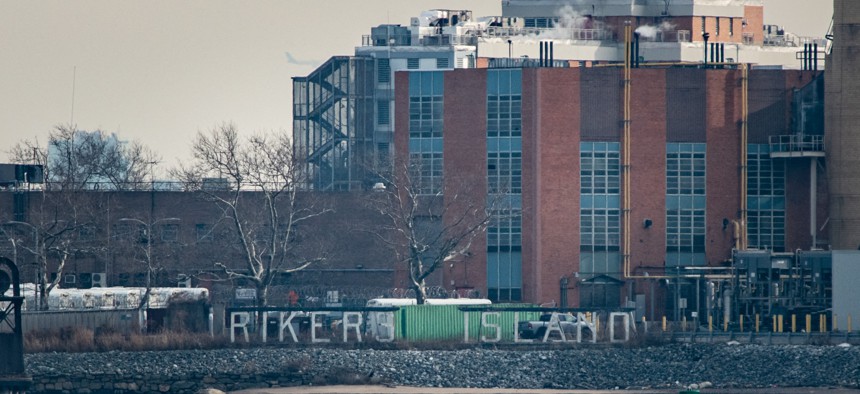Nonprofits
Preventing reimprisonment of formerly incarcerated individuals starts with higher-paying jobs
The city should work with unions and re-entry providers to create work opportunities that facilitate and track long-term success.

A general view shows the Rikers Island jail complex in the East River of New York, from Queens, on January 13, 2022. ED JONES/AFP via Getty Images
Across New York City, the public safety crisis is most acutely seen and felt in low-income communities of color. Indeed, gun violence is ravaging neighborhoods already hit hardest by COVID-19, mass incarceration, unemployment, and low-wage work.
As the city struggles to cope with this crisis, greater attention needs to be paid to how formerly incarcerated New Yorkers are brought into the job market and on what terms.
Our two organizations have typically approached challenges like these from different perspectives. One of us – the Center for Employment Opportunities (or CEO) – is the biggest provider of reentry employment services in the country. The other – the Mason Tenders’ District Council of New York – is a 16,000-member union mainly representing New York City construction laborers. CEO’s main focus has been finding immediate employment with daily pay for people who have recently returned from incarceration and need to start earning wages as soon as possible. The union tries to create high-quality careers for construction laborers.
New Yorkers released from prison typically must seek and maintain employment as a condition of their parole, and construction has traditionally been one of the most accessible industries for people with criminal justice histories. Reentry service providers have connected formerly incarcerated workers with jobs in nonunion construction, but these jobs overwhelmingly lack a pathway to higher earnings or the protections and benefits of union membership.
Absent unionization, short-term construction jobs almost never result in long-term sustainable employment. And right now, there are not enough union career paths in the city to accommodate the number of people being released from incarceration who are interested in working in construction.
Without wage growth and career advancement, these individuals may get stuck in low-wage jobs that do not allow them to make ends meet. They may find themselves returning to familiar criminal activity they know will help pay their bills – even if it means risking reimprisonment.
Fortunately, that vicious cycle can be broken. Indeed, there is a better way forward.
The city can use its full regulatory and buying power to create work opportunities that facilitate and track long-term successful reentry employment. To make that happen, contracts for reentry service providers should provide funding to prepare people for union construction and target high quality full-time placements that pay prevailing wages. Private employers doing business with the city must be required to demonstrate they are creating higher wage jobs with real reentry career opportunities. And public education needs to change the mind-sets that keep too many New Yorkers thinking that formerly incarcerated people should be content getting paid low wages with intolerable job-site risk.
City-supported construction of affordable housing is an ideal place to transform reentry employment. Specifically, city government should set a $40-an-hour wage and benefit requirement on development projects receiving subsidies, and partner with the unions like Laborers’ Local 79 and reentry service providers in the Alternatives to Incarceration (ATI) coalition to ensure that New Yorkers with criminal justice histories can be trained for and placed into these career facilitating jobs.
Developers, especially those building affordable housing, are hungry for subsidies. And there is recent real-estate market precedent to show that affordable housing developers receiving subsidies will pay a $40-an-hour wage and benefit package for well-trained union construction laborers. Just ask L+M Development Partners - they agreed to this exact wage and benefit package in a landmark deal with Laborers’ Local 79 covering several large affordable housing developments planned for East Harlem and the Bronx.
Acting now to ensure that more formerly incarcerated New Yorkers can successfully enter our economy is crucial for increasing public safety, reducing crime and recidivism, and generally building a more stable and resilient workforce after the horrors of the COVID-19 pandemic.
We all stand to benefit when more New Yorkers from low-income communities can move from incarceration to economic stability in new union careers building the future of our city.
Samra Haider is President of the Center for Employment Opportunities (CEO). Mike Hellstrom is Business Manager of the Mason Tenders’ District Council of New York.
NEXT STORY: Revamping how we teach reading must be fundamental to NYC DOE reforms
